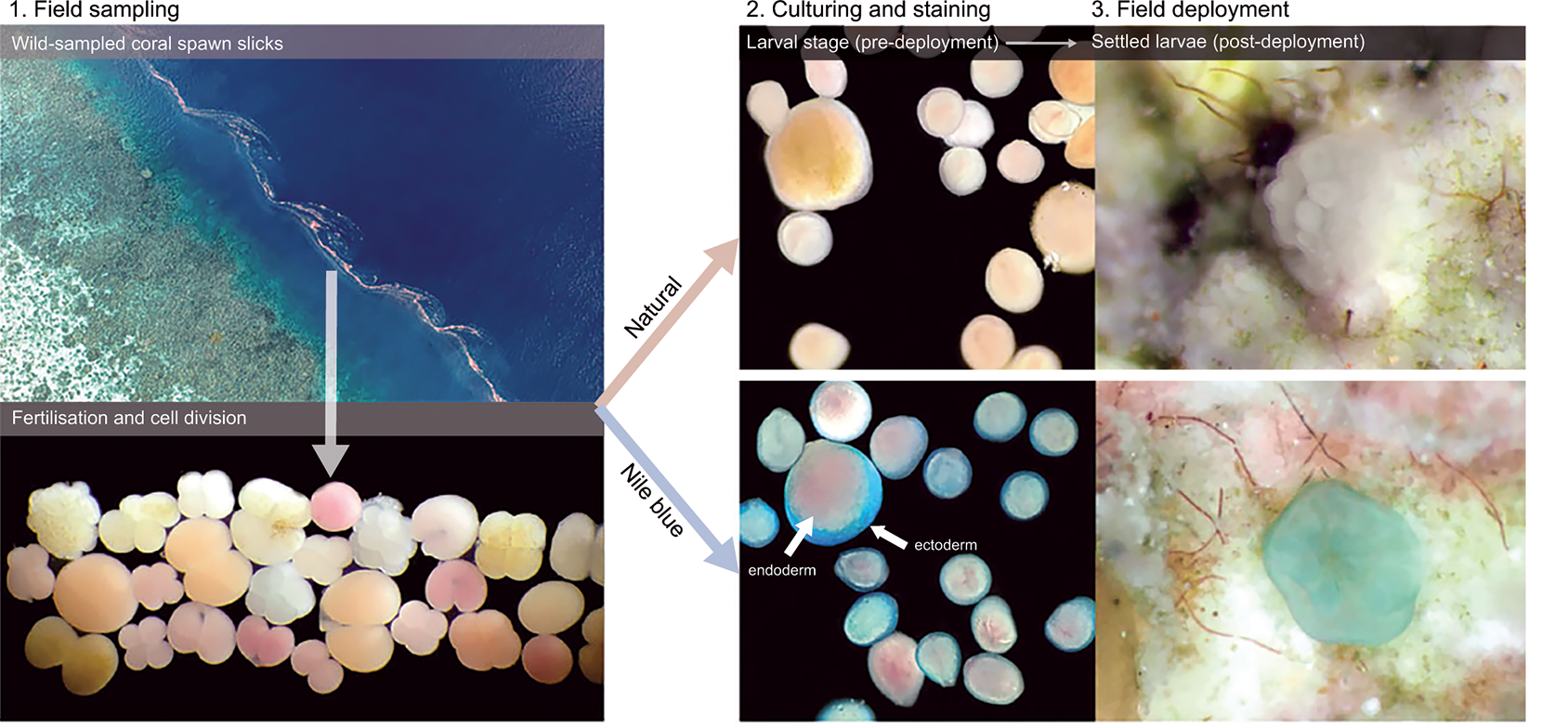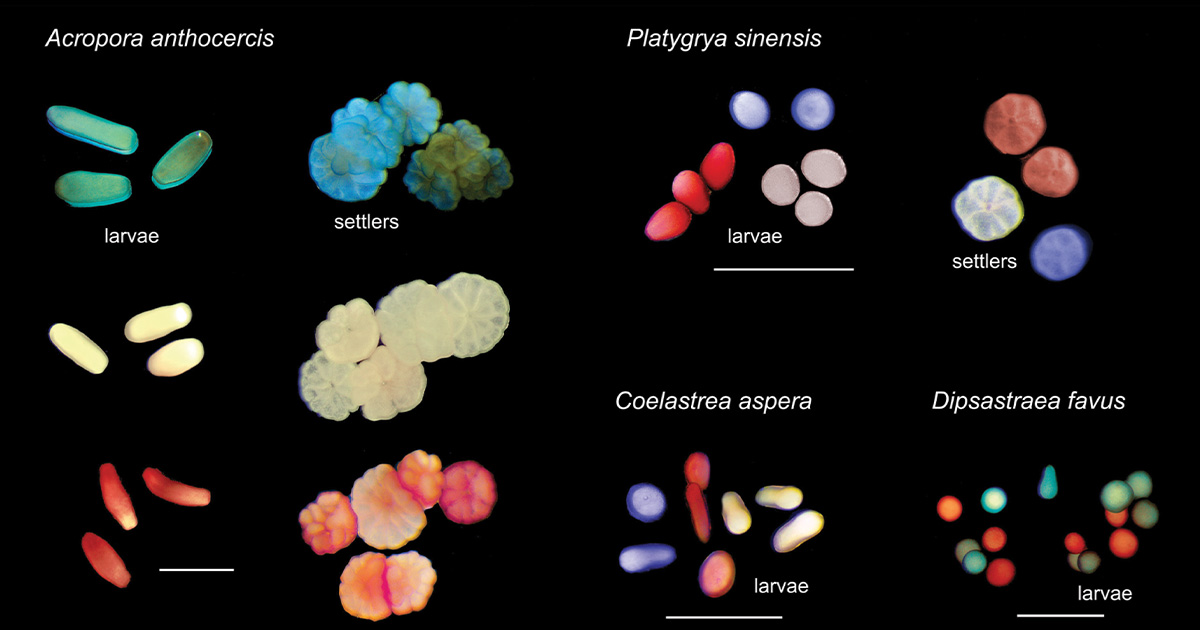A new, low-cost staining method enables visual tracking of coral larvae as they disperse and settle in coral reefs, according to a study published in the open access journal PLOS Biology by Christopher Doropoulos and George Roff at CSIRO Oceans & Atmosphere, Australia.
Corals are marine invertebrates of major conservation importance because of their ability to build reefs that in turn provide habitat for many other marine creatures, but they are threatened by climate change, pollution, and other human activities. They are able to produce trillions of microscopic larvae that disperse up to 100 kilometers and settle on the seabed, making tracking their movements challenging.
To investigate a novel method for tracking coral larvae, the researchers collected nearly 3000 larvae from lab-reared corals of two species (Acropora spathulata and Platygyra daedalea) and incubated them with one of four colored dyes at different concentrations. They found that two dyes—neutral red and Nile blue—successfully stained coral larvae and had minimal impact on their survival and settlement. Testing these two dyes on a further four coral species in the laboratory successfully stained 98% of larvae. To test the new method in the field, they captured eggs from wild spawning corals on the Great Barrier Reef, cultured them in larval pools in the Lizard Island lagoon and stained 10,000 larvae with Nile blue dye. They detected successful settlement of stained larvae on tiles placed in the lagoon.
The staining method provides researchers with a quick, simple, and non-toxic approach to studying dispersal in large numbers of coral larvae. It is also low-cost, allowing 100,000 larvae to be stained for around 1 US Dollar. The different color dyes could be used to differentiate between groups or species, making the method applicable to conservation planning, behavioral ecology, and reef restoration experiments in both laboratory and field studies, the authors say.

Doropoulos adds, "We have developed a novel method for coloring large numbers of coral larvae (millions to billions). Our method allows for immediate differentiation and visual tracking of coral larvae from dispersal to settlement and will facilitate a wide range of de novo studies of larval behavior and ecology."



